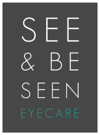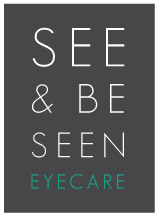Do you find that your eyes are red and irritated after a long day at work, or that letters become blurry after extended periods looking at a computer screen?
These could be signs of dry eye syndrome. There are many causes of dry eye. For example, dry air and prolonged use of digital devices can increase your risk of developing dry eye.
However, there are simple steps you can take to prevent or alleviate the symptoms.
While there are several ways to treat or manage dry eye syndrome, seeing optimally is foundational to preventing dryness. You see, our eyelids replenish nourishing lubricant oils when they are stimulated. Blinking is how they are stimulated throughout the day.
If you are unable to see optimally, it is probably because you don’t blink as much. As a result, the glands are not stimulated to release oil. This is one of the main causes of dry eye syndrome. It is a vicious snowball that glasses can help with, especially given all the staring we do when working on our computers or phones.
In fact, a recent study suggests that humans are blinking 70% less than they did just 1 generation ago! Computer glasses with the right filters can help optimize your vision and wraparound glasses can help reduce the amount of air hitting your eyes.
If you are experiencing irritation while wearing contact lenses, your eye doctor may recommend switching to glasses more frequently as a way to reduce irritation.
What Is Dry Eye?
Dry eye syndrome is a common condition that occurs when the eyes don’t produce enough tears, or when the tears produced evaporate too quickly. This can lead to discomfort and a range of symptoms, including:
- Burning
- Redness
- Blurred vision
- Sensitivity to light
- Stringy mucus in or around your eyes
- Difficulty with nighttime driving
- Watery eyes
The tear film that coats your eyes is essential for maintaining eye comfort. It’s made up of 3 layers:
- An oily layer
- A watery layer
- A mucus layer
Problems with any of the layers of the tear film can cause dry eye syndrome. Dry eye can be classified into two types: poor tear quality and insufficient tear volume.
Poor Tear Quality
Poor tear quality is often caused by clogged meibomian glands, which produce oil that helps keep tears from evaporating too quickly. When there isn’t enough oil in your tears, they can dry out, leading to a condition known as evaporative dry eye (EDE).
Insufficient Tear Volume
Insufficient tear volume, on the other hand, occurs when there is a lack of the water component in your tears. This is often caused by improper function of the water glands that produce tears, leading to a condition called aqueous deficiency dry eye (ADDE).
What Helps Reduce Dry Eye Symptoms?
If you’re struggling with dry eyes, you’re not alone, and there are several things you can try to find relief.
- Make sure you’re wearing the right glasses
- Blink more often
- Artificial tears
- Use a humidifier
Make Sure You’re Wearing the Right Glasses
If you wear glasses, you may find that switching to a different type of lens can help with dry eye. For example, if you currently wear single-vision lenses, you might consider switching to progressive lenses, which can help to reduce eye strain if you have presbyopia.
Wraparound glasses can also reduce the amount of wind reaching your eyes and decrease tear evaporation.
Or, if you wear contact lenses, you may find that switching to a different brand or type of lens can help alleviate dryness. Scleral contact lenses are a type of lens that completely covers the front surface of the eye, creating a “vault” over the cornea.
This design helps to keep the front surface of the eye moist and comfortable and can be particularly useful for those with severe dry eyes.
Blink More Often
One simple solution is to blink more often. Blinking helps to spread your tears over the surface of your eye, and if you’re spending a lot of time on a computer or other digital device, you may be blinking less than usual.
Taking frequent breaks to blink and rest your eyes can help keep your eyes moist and comfortable.

Artificial Tears
Another tip is to use artificial tears. These are eye drops that can help to lubricate your eyes and provide temporary relief from dryness and discomfort. You can find artificial tears over the counter or even online at See & Be Seen Eyecare!
Just be sure to follow the instructions on the label, and avoid using them for more than a few weeks at a time without consulting your eye doctor.
Use a Humidifier
If you’re dealing with dry eye syndrome due to environmental factors like dry or dusty air, you can try using a humidifier in your home or office to add moisture to the air. This can help to keep your eyes from drying out.
Dry Eye Therapy
Dry eye therapy refers to a range of treatments that are used to manage or alleviate the symptoms of dry eye syndrome. At See & Be Seen Eyecare, we offer a range of treatments to help reduce dry eye symptoms.
Some dry eye therapies include:
- LipiFlow thermal pulsation
- BlephEx
- Intense pulsed light therapy
- Radiofrequency
Additionally, our team can help guide you on treatments you can do at home including:
- Eye drops & sprays
- Gels & ointments
- Cleansers
- PRN omega fish oil
- Bruder masks
If you have any questions about how to best treat your dry eye syndrome, don’t hesitate to book an appointment with us!




